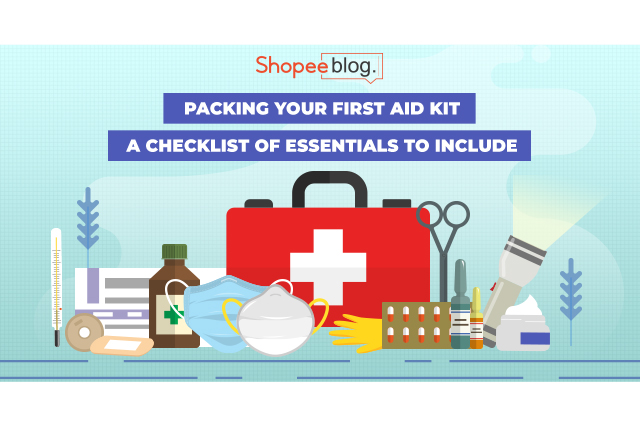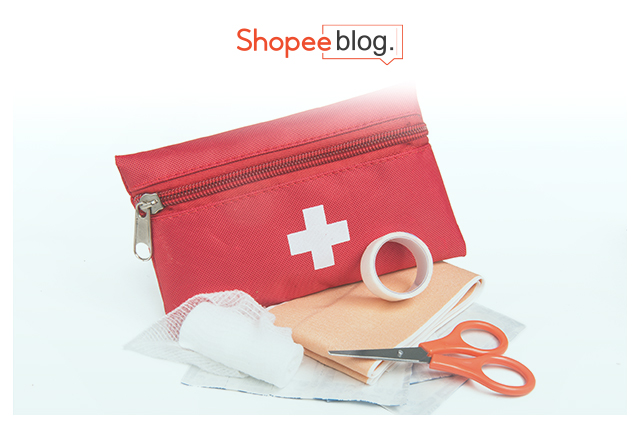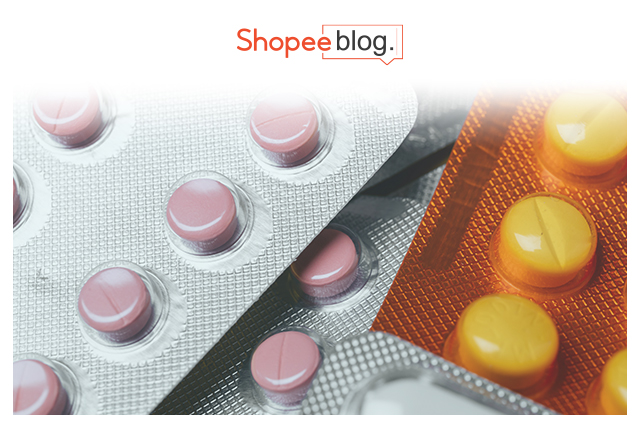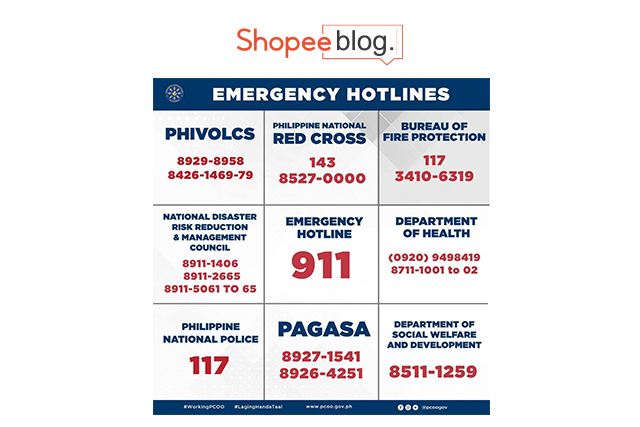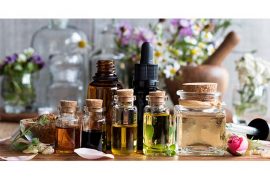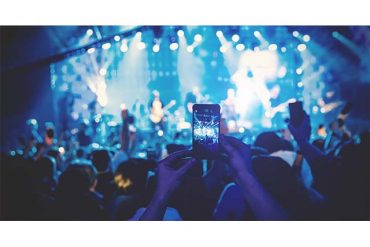Did you know that July is the Natural Disaster Awareness Month? This is of great importance because the Philippines is no stranger to natural disasters. Being located in the Pacific Ring of Fire, the Philippines is prone to earthquakes and volcanic eruptions. We’re well aware of the Taal volcano eruption that happened earlier this year. The wind carried volcanic ash for miles and wearing a mask was non negotiable. Aside from earthquakes and volcanic eruptions, the Philippines has an average of 20 typhoon cyclones every year. July to October is usually the peak of the typhoon season. Having a first aid kit proves to be essential whenever calamities strike.
In line with this month being the Natural Disaster Awareness Month, here’s a friendly reminder to have your first aid kits ready at all times! We all like to be knowledgeable about the do’s and don’ts when facing a calamity. But what about when we encounter minor accidents or injuries? What do we do? That’s when first aid kits come to the rescue! If it’s a minor injury that can be treated with first aid, then this kit has got you covered. It contains all the items you need for first aid medical treatment. With the help of the first aid kit, you will be able to respond quickly and effectively! Doing so will lessen the possibility of infection and further complications. You can buy first aid kits online or you can make one by yourself and tailor it to your needs. Now that we’re facing a pandemic, we have to make sure that we have our own first aid kits! It is always better to be prepared. Keep reading to see the comprehensive first aid kit checklist which includes all the must-have first aid kit items.
First Aid Kit Items That You Should Have
Before proceeding with all the needed items, one of the most important things you should have is a “go bag” where you will put all your first aid kit items. It’s crucial to have this so that everything you need is in one place. The bag should be big enough to accommodate all the needed supplies, but small enough to carry and be placed somewhere safe. Once you’ve got that all settled, it’s time to complete your first aid kit!
1. Basic Supplies
Credit: DLG Images / Flickr
This includes the basic things needed for first aid treatment.
a. Bandage needs
- Adhesive tape
- Triangular bandage
- Elastic bandages
- Bandage strips
- Butterfly bandages
- Plasters in assorted shapes and sizes
- Gauze pads and rolls
b. Creams
- Burn cream
- Skin rash cream
c. Wound cleansers
- Distilled water – this is used to clean wounds
- Antiseptic solution and/or antiseptic cream
- Antiseptic wipes
d. Personal protective equipment
- Hand sanitizer
- Surgical mask – this is essential for blocking out viruses. The most common are the Aidelai face mask, Jiaduobao face mask, Air Queen Nano mask, and the Heng De face mask. Make sure to put enough face masks in your kit for everyone in the family and extras too!
- N95 mask – this essential especially when there’s a volcanic eruption to avoid inhalation of volcanic ash
- Face shield – for added protection. Heng De face shield is the most common in the market.
e. Tools
- Scissors
- Tweezers
- Safety pins
- Gloves
- Thermometer
- Emergency blanket
- Flashlight
- Flashlight batteries
- First aid manual
2. Medicines
Credit: Karolina Grabowska / Pexels
It’s important to include personal medications in your first aid kits. But don’t forget to regularly check the medicines to make sure that they are not expired. Replace them when needed!
- Antihistamine tablets for allergies
- Cough and cold medications
- Anti-diarrhea medication
- Pain relievers
- Personal medication that doesn’t need to be refrigerated
- Aspirin (but make sure that you are not allergic to aspirin and that you are not taking other blood thinners medication)
3. Emergency Details
Credit: GOVPH
- Contact numbers of emergency services and nearby hospitals
- Contact numbers of family members
- Your doctor’s contact information
- Government issued ID
Once everything is complete, put your first aid kit in an area where you have easy access to. This will make it easier to reach for when you need it. As recommended, you should put first aid kits both in your home and in your car. Remember to regularly check your first aid kits to make sure it doesn’t contain any expired medicines or creams. Replenish it whenever a certain item was used like bandages.
When faced with an emergency, especially a calamity, try your best to keep calm and don’t panic. Grab your first aid kit and treat wounds or injuries that can be treated with first aid. Remember to call emergency services and carefully listen to their instructions. You can listen to the news as well for more information and updates on the situation. Stay safe, be prepared, and pack your first aid kits!

